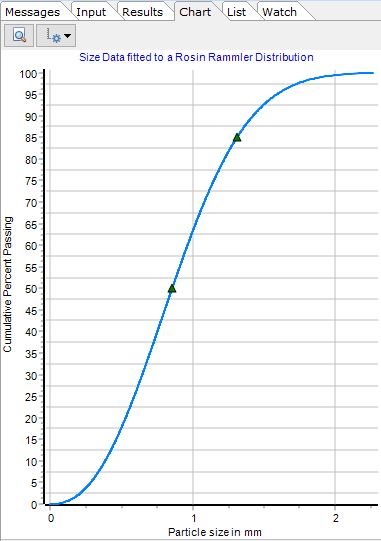A user intends to model a slurry however only has d50 and d85 particle sizes. The data has been entered as follows:

The software includes a number of pressure loss correlations for slurry systems, some of which use just the d50 size, d50 & d85 sizes or full PSD (Particle Size Distribution) data.
When we enter the d50 & d85 values as we have done in this case, the software automatically develops a Rosin-Rammler curve-fit based on the particle size data defined. In this case, we only have two co-ordinates as opposed to a full set of PSD data. This limited information can affect the overall accuracy of the estimated PSD curve-fit which is visible on the CHART tab of the Data Palette.
In this case, the estimated Rosin-Rammler curve-fit appears as follows:

As we can see in the chart above, the d50 and d85 values don't match the values defined by the user on the Input tab of the Data Palette. In some cases such as this example, the approach of defining just the d50 and d85 values to plot a PSD curve fit is not suitable.
The recommendation is to use either the Durand or WASC correlation as an initial first pass. The results can then be reviewed and compared with the results developed from other PSD correlations if necessary.